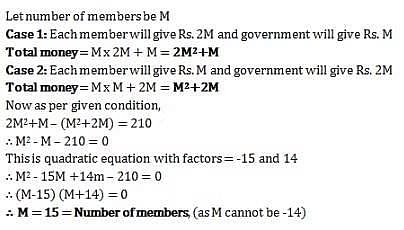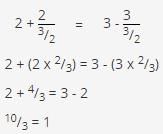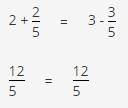Test: Quantitative Aptitude- 4 - GMAT MCQ
21 Questions MCQ Test - Test: Quantitative Aptitude- 4
In a Christmas sale, the prices of Dell Laptops were reduced by 10% for public. However, for Dell employees, the price was further reduced by 5%. If the original price of a laptop was $330 before Christmas sale, approximately how much would it cost in a Christmas sale to a Dell employee?
Milk needs to be thinned to a ratio of 3 parts milk to 2 parts water. The milk-man has by mistake added water so that he has 8 liters of milk which is half water and half milk. What must he add to make the proportions of the mixture correct?
| 1 Crore+ students have signed up on EduRev. Have you? Download the App |
Alan has two more than twice as many chocolates as does Alice, and half as many chocolates as does Nadia. If Alice has ‘a’ number of chocolates, then in terms of ‘a’, how many chocolates do Alan, Alice and Nadia have?
Adam is 2 years older than Mike. The square of Adam’s age is 28 greater than the square of Mike’s age in years. What is the sum of Adam’s age and Mike’s age?
If the product of two integers x and y is less than 82 with y being a multiple of three. What is the highest value that x may have?
A group wanted to renovate their club. Each member contributed an amount equal to twice the number of members in the club. But the government contributed same amount as the number of members. If each member had contributed the same amount as the number of members and the government had given an amount twice the number of members, then they would have Rs. 210 less. How many members are there?
If Dave drove one-third of the distance of his trip on the first day, and 60 miles on the second day, he figured out that he still had 1/2 of the trip to drive. What was the total length, in miles, of his trip?
Eddie is 7 years older than Brian. If Brian is x years old, then how old was Eddie 11 years ago?
Adam has bought a certain number of apples. Jen has bought 5 times the fruit that Adam has bought. If Jen has bought two and a half dozen apples how many apples does Adam have?
A house is built by 20 workers in 30 days. How many workers will be needed to complete the work in 15 days?
A code is to be made by arranging 7 letters. Three of the letters used will be the letter A, two of the letters used will be the letter B, one of the letters used will be the letter C, and one of the letters used will be the letter D. If there is only one way to present each letter, how many different codes are possible?
If x is an integer and 2.134 x 10x is less than 210,000, what is the greatest possible value for x?
John spent 40 percent of his earnings last month on rent and 30 percent less than what he spent on rent to purchase a new dishwasher. What percent of last month's earnings did John have left over?
If negative integers k and p are NOT both even, which of the following must be odd?
Peter read P books last year, and Nikki read N books last year. If Peter read 35 more books than Nikki last year, which of the following reflects the relationship?
If 2 is the remainder when m is divided by 5, what is the remainder when 3m is divided by 5?
To fill and art exhibit, the students in an art course are assigned to create one epiece of artwork each in the following distribution: 1⁄3 are sculptures, 1⁄8 are oil paintings, 1⁄2 are watercolors and the remaining 10 pieces are mosaics. How many students are in the art class?
A computer company's featured laptop cost $800 last year. This year, the laptop sold for 15% less than it did last year. Next year, after updates are made to the model, there will be a 25% price increase over this year's price. What will be the price next year?
Master Chef Alan makes a dish every day from one of his recipe books. He has written 3 books and each book contains 15 different recipes. What is the probability that he will cook 4th dish from 3rd book today?





















